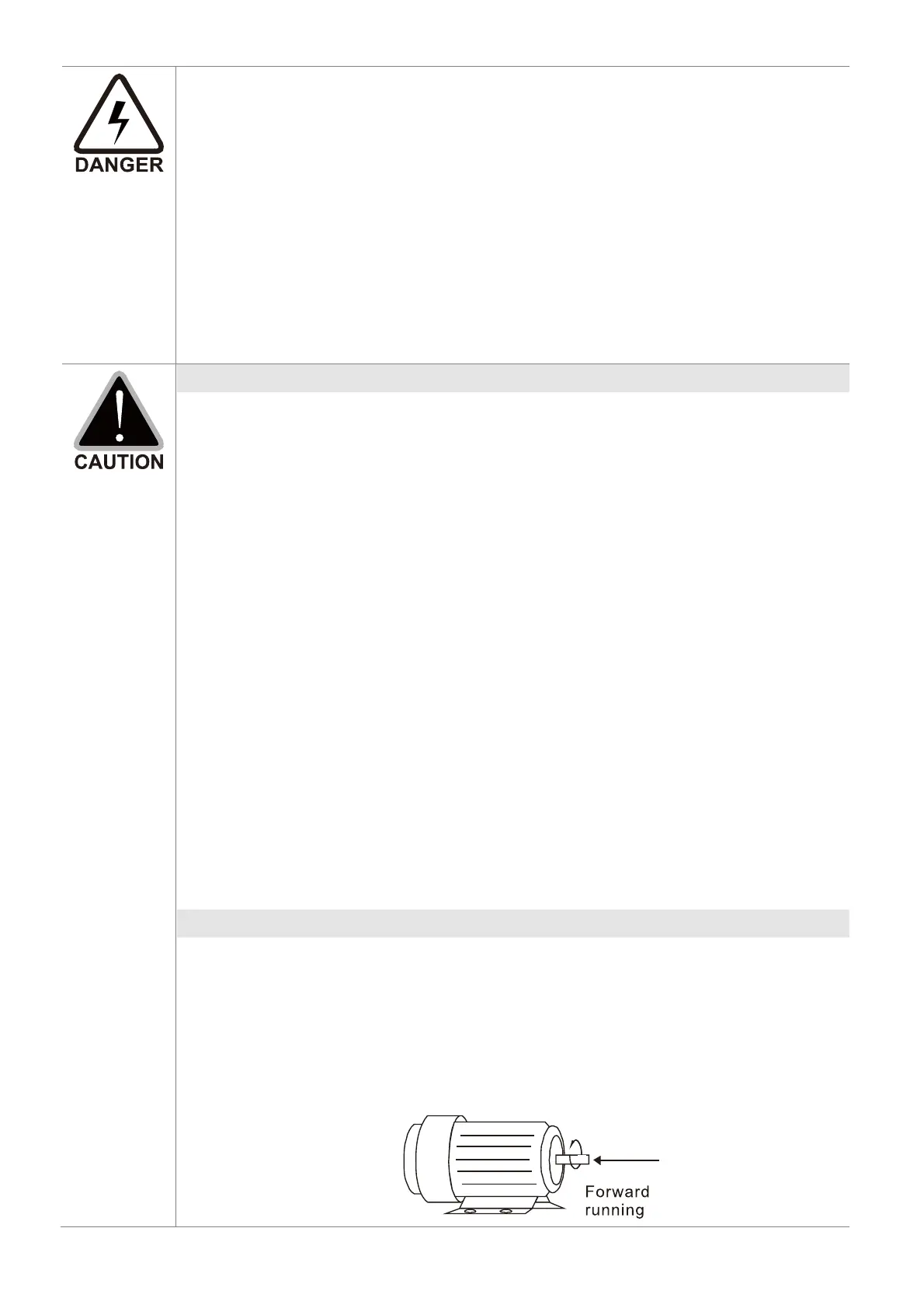Chapter 5 Main Circuit TerminalsME300
5-2
Securely fasten the main circuit terminal screws to prevent sparking caused by
loose screws due to vibration.
If necessary, use an inductive filter only at the motor output terminals U/T1, V/T2,
W/T3 of the AC motor drive. DO NOT use phase-compensation capacitors or L-C
(Inductance-Capacitance) or R-C (Resistance-Capacitance), unless approved by
Delta.
DO NOT connect brake resistors directly to +1/DC+ to DC-, +2/B1 to DC- to prevent
damage to the drive.
Ensure proper insulation of the main circuit wiring in accordance with the relevant
safety regulations.
Main power terminals
R/L1, S/L2 and T/L3 have no phase-sequence requirement; they can be connected
in any sequence.
Add a magnetic contactor (MC) at the power input to quickly cut off power and
reduce malfunction when activating the AC motor drive protection function. Both
ends of the MC should have an R-C surge absorber.
Ensure that voltages and currents are within specification. Refer to Chapter 09
Specifications for details.
When using a general GFCI (Ground Fault Circuit Interrupter), use a current sensor
with sensitivity of 200 mA or above and not less than 0.1 second operation time to
avoid nuisance tripping.
Use conduits or shielded cables for the power wiring, and ground both ends of the
conduit or shielded cables.
DO NOT start or stop the drive by turning the power ON or OFF. Start and stop the
drive with the RUN/STOP command from the control terminals or keypad. If you
still need to run or stop the drive by turning the power ON or OFF, it is strongly
recommended that you do so no more often than ONCE per hour.
To comply with UL standards, connect the drive to a three-phase three-wire or
three-phase four-wire Wye system type of mains power system.
Output terminals for main circuit
Use a well-insulated motor that is suitable for operation with an inverter.
When the AC drive output terminals U/T1, V/T2, and W/T3 are connected to the
motor terminals U/T1, V/T2, and W/T3 respectively, the motor rotates
counterclockwise (as viewed from the shaft end of the motor) when it receives a
forward operation command. To permanently reverse the direction of rotation,
exchange any two motor leads.
